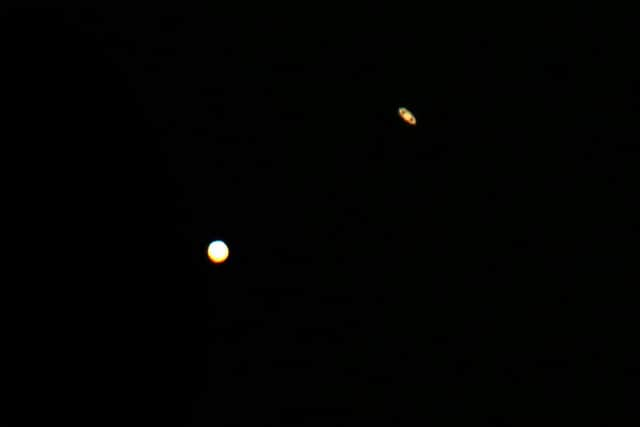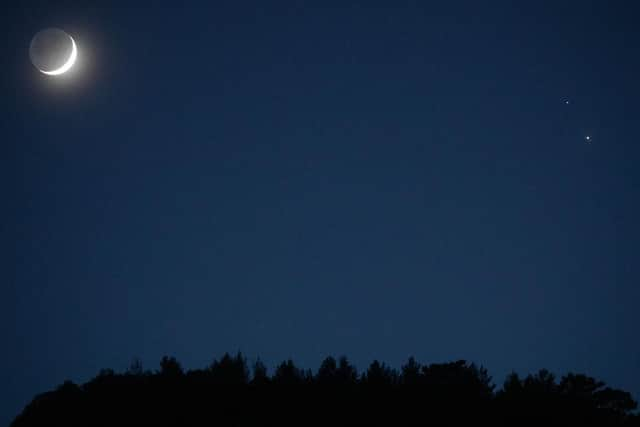Moon, Saturn and Jupiter conjunction 2021: what is the rare space event - and how to see the planets meet
This week, those looking heavensward will be able to see a rare celestial event, as two of the solar system’s biggest planets and our own humble moon will appear to be ‘close’ to one another in the night sky.
It’s an event that is known as a conjunction, which in common parlance has come to refer to any close groupings of astronomical objects.
Advertisement
Hide AdAdvertisement
Hide AdBut how can you see this celestial event, and will you need any specialist equipment to enjoy it?


Here is everything you need to know about it.
When is the conjunction?
Technically, the exact moment of conjunction – when the celestial bodies will appear to be closest together in the sky – won’t be visible from the UK, as it will take place during daylight hours, when the planets will be out of our from-Earth view.


But, stargazers in the UK will still be able to see the planets and the moon appearing to be relatively close to one another on the morning of Wednesday 10 March.
You may need to set your alarm and get an early start to catch the spectacle, as the best time to see the conjunction is just before sunrise in the dawn sky – around 5am.
How can I see it?
To spot the planets, look south to find the Moon low to the horizon – those lucky enough to live in an area of horizon unobstructed by trees or city buildings will have the best chance at spotting the conjunction.
The planets will appear as bright stars in the Moon’s vicinity, and should be easily observable with the naked eye. That’s weather conditions permitting of course, and even with clear skies you may want to use binoculars for a clearer look.
Saturn will be high and to the right of the Moon, while Jupiter will be the ‘star’ that appears closest to it.
The conjunction will be visible in the sky for about an hour, at which point the light of the rising sun will drown out the glare of the two distance planets.
I thought conjunctions were rare?
Advertisement
Hide AdAdvertisement
Hide AdThe event is not to be confused with December 2020’s ‘Great Conjunction’, which saw Jupiter and Saturn come together in the sky to form a bright mass which many historians believe explains the ‘Christmas Star’ in the tale of Nativity.
Great conjunctions between Saturn and Jupiter are rare – hence the name, ‘Great’ – and the next easily observable conjunction of the two planets is not expected for nearly 40 years.
March’s conjunction is actually two separate conjunctions – one between Jupiter and the Moon, and the other between Saturn and the Moon
This is why it is not considered a ‘great’ conjunction.
How close will the planets be?
Of course, while they may look like they’re rubbing planetary shoulders in space, the bodies are in fact separated by hundreds of millions of miles, and there are on average around 403 million miles separating the two “gas giants”.
Jupiter's distance from Earth is constantly changing due to the orbits of the two planets; it is 365 million miles away at its closest point and 601 million miles away at its furthest.
It's a similar story with Saturn's orbit – even at its closest point, Saturn is still 746 million miles away from us here on Earth.
Jupiter is the largest in the Solar System, 11 times wider than Earth, while Saturn is the second largest at nine times the width of Earth.
When is the next conjunction?
Planetary conjunctions are fairly commonplace – March has already given us one between Mercury and Jupiter.
Later in the month, there will be a conjunction between the Moon and Mars on the evening of 19 March, and a planetary conjunction between Mercury and Neptune on the evening of 29 March.